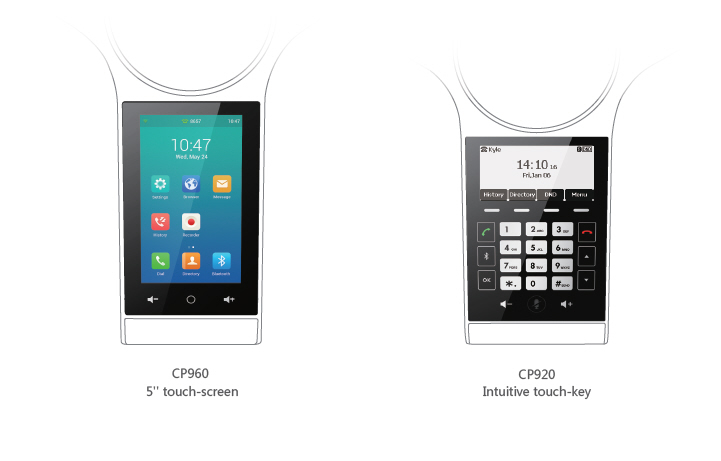Introduction
In an era where communication defines the fabric of business, the advent of Voice over Internet Protocol (VoIP) technology has transformed how organizations connect with their clients and each other. VoIP phones not only enhance communication but also provide a treasure trove of data that can drive informed business decisions. The integration of call analytics into VoIP phone systems adds an additional layer of sophistication, enabling businesses to glean insights from their communication patterns. This article dives deep into "VoIP Phones and Call Analytics: Driving Informed Business Decisions," exploring how these technologies can empower your organization.
What is a VoIP Phone System?
A VoIP Phone System is a telecommunication system that allows voice calls to be made using the Internet instead of traditional telephone lines. By converting voice signals into digital data packets and transmitting them over the internet, VoIP technology offers superior flexibility and cost-effectiveness compared to traditional phone systems.
How Does VoIP Work?
At its core, VoIP works by digitizing audio signals, compressing them into packets, and sending them through the internet. When you speak into a VoIP phone, your voice is converted into data packets. These packets travel across the internet to reach their destination, where they are reassembled back into audio for the receiver.
Benefits of Using VoIP Phone Systems
Cost Efficiency: Traditional phone services often come with high charges, especially for long-distance calls. With VoIP systems, calls can be significantly cheaper or even free.
http://brooksysjp550.yousher.com/the-essential-guide-to-implementing-sip-trunking-in-your-voip-phone-systemScalability: Businesses can easily expand their communication needs without hefty investments in new infrastructure.
Feature-Rich Services: VoIP systems often come bundled with features like voicemail-to-email transcription, call forwarding, and automated attendants.
Mobility: Users can make and receive calls from anywhere with an internet connection, which enhances remote work capabilities.
The Importance of Call Analytics in Business
When it comes to optimizing operations, call analytics plays a pivotal role in providing actionable insights derived from call data. Understanding who your customers are calling, when they are calling, and what they are discussing can offer valuable perspectives on business performance.
What is Call Analytics?
Call analytics involves collecting and analyzing data regarding inbound and outbound calls within an organization. This process helps businesses understand customer behavior better and improve operational efficiency.
Key Metrics in Call Analytics
- Call Volume: The total number of incoming or outgoing calls within a specified period. Duration: Average time spent on each call. Abandonment Rate: Percentage of callers who hang up before reaching an agent. Conversion Rates: The percentage of calls that lead to successful sales or inquiries.
VoIP Phones and Call Analytics: Driving Informed Business Decisions
The synergy between VoIP Phones and call analytics creates a powerful tool for businesses looking to make informed decisions based on real-time data insights. By leveraging advanced analytics tools integrated into VoIP systems, organizations can assess customer interactions more effectively.
Enhancing Customer Experience Through Data Analysis
When businesses analyze call data from their VoIP systems, they gain insights that help improve customer experience:
Understanding peak call times helps allocate resources more efficiently. Identifying frequently asked questions or concerns enables proactive customer service strategies. Monitoring agent performance leads to targeted training initiatives.
Driving Sales Through Informed Decisions
Sales teams equipped with analytics tools can tailor their pitches according to customer preferences identified through previous interactions captured in the data.
Choosing the Right VoIP Phone System for Your Business Needs
Selecting the appropriate VoIP phone system involves considering various factors such as features offered, scalability options, pricing models, and vendor reliability.
Factors to Consider When Choosing a VoIP System
Features & Functionality- Look for essential features like voicemail-to-email transcription, multi-party conferencing capabilities, automated attendants, etc.
- Ensure that the system can grow with your business without requiring significant reinvestment.
- Opt for systems that integrate seamlessly with existing software tools such as CRM platforms or project management tools.
- Research vendor reputation concerning uptime guarantees and customer support services.
Integrating Call Analytics Tools with Your VoIP System
Integrating robust call analytics tools with your existing VoIP system ensures you maximize the potential insights available through your phone communications.
Popular Call Analytics Tools to Consider
CallRail:- Offers detailed reporting on inbound marketing campaigns alongside call tracking features.
- Provides comprehensive reporting capabilities fully integrated within its platform.
- Known primarily for video conferencing but also offers powerful analytics features for both video calls and telephony services.
Why Integration Matters
Integrating these tools enables businesses not only to track performance metrics but also to correlate them with specific marketing initiatives or operational changes—creating feedback loops that inform strategic decision-making processes effectively.
FAQ Section
1. What is the primary advantage of using a VoIP phone system?
The primary advantage is cost savings; businesses typically experience lower costs for long-distance calling compared to traditional landline services.
2. How does call analytics improve customer service?
By analyzing caller behaviors and preferences through recorded conversations, businesses can tailor their approaches for better service outcomes leading to higher satisfaction rates.
3. Can I use my existing hardware with a new VoIP phone system?
Yes! Most modern VoIP solutions allow integration with existing hardware while also offering options for new specialized equipment if needed.

4. Is it difficult to switch from a traditional phone system to a VoIP system?
Transitioning may require some planning regarding infrastructure adjustments; however, many providers offer migration assistance making it easier than expected.

5. What security measures should be taken with a VoIP system?
Encryption protocols should be implemented alongside regular software updates; firewalls specifically designed for VOIPs should also be utilized to protect against breaches.
6. How do I ensure quality during calls over my internet connection?
Invest in sufficient bandwidth tailored specifically for voice traffic while also implementing Quality of Service (QoS) settings on routers prioritizing voice data over other types of traffic will help maintain clarity during conversations.
Conclusion
As we've explored throughout this article on “VoIP Phones and Call Analytics: Driving Informed Business Decisions,” it's evident that integrating these technologies offers immense advantages in enhancing communication effectiveness while simultaneously empowering organizations through insightful data analysis capabilities available via innovative software solutions today!
By harnessing these combined advantages—cost efficiency provided by advanced telecommunications alongside actionable intelligence gathered from analytical insights—businesses stand poised not just merely surviving but thriving amidst competitive pressures present across industries worldwide!
So why wait? Embrace the future now! Explore how adapting these cutting-edge technologies could elevate your organization’s performance metrics today!